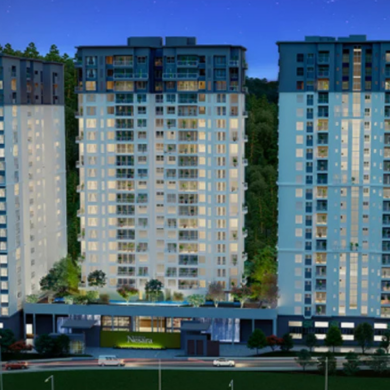
Homeowners’ Associations (HOAs) in India are pivotal in shaping residential communities’ lifestyles, amenities, and regulations. In recent years, HOAs have become increasingly prevalent in India, especially in gated communities and housing societies.
Homeowners’ Associations (HOAs) are organisations established within residential communities to manage and govern common areas, amenities, and shared responsibilities among property owners. The primary purpose is to ensure the maintenance, upkeep, and enhancement of the community’s quality of life and the value of the property. They typically operate through rules, regulations, and bylaws agreed upon by the homeowners.
Table of Contents
Historical Context of HOAs in India
In India, this concept has gained prominence in the recent past, particularly in urban areas and gated communities. The rise of HOAs can be attributed to the increasing trend of planned residential developments, where real estate developers create self-contained neighbourhoods with shared facilities and services.
Importance of HOAs in Community Development
These teams play a crucial role in fostering a sense of community, ensuring the well-being of residents, and enhancing the overall quality of life within the neighbourhood. Some key reasons why they are important in community development include:
- Maintenance of Common Areas
- Enforcement of Rules and Regulations
- Financial Management
- Dispute Resolution
- Community Engagement
Formation and Registration of HOAs in India
In India, the formation and registration of these associations are governed by various laws and regulations, depending on the state and local jurisdiction. While there is no specific central legislation exclusively, they typically operate under the framework of cooperative societies, apartment ownership acts, or state laws related to real estate and housing. These laws provide guidelines for the formation, registration, governance, and operation.
Steps Involved in Forming an HOA
- Organise a meeting among interested homeowners to discuss establishment of the association
- Draft bylaws and rules governing the operation
- Register as a legal entity, as required by state laws
- Elect office bearers responsible for managing the affairs
Mandatory Requirements for Registration
- Formation of a legal entity, such as a cooperative society, under the relevant state laws
- Draft & adopt a memorandum and articles of association outlining the objectives, rules, and regulations
- Meeting a minimum threshold of homeowners required to form an HOA, as specified by laws or regulations
- Payment of applicable registration fees, along with submission of registration documents
- Compliance with all statutory requirements and regulations applicable to HOAs in the respective state or locality
Governing Documents of HOAs
These governing documents – including the CC&R, bylaws, and rules and regulations – provide the framework for the operation and management of the community.
-
Declaration of Covenants, Conditions, and Restrictions (CC&R)
The CC&R is a legally binding documen t that outlines the rules, restrictions, and obligations that homeowners within the community must adhere to. It typically includes provisions related to property maintenance, architectural guidelines, land use restrictions, and obligations to pay dues or fees for common area maintenance.
-
Bylaws
Bylaws are the internal rules and regulations that govern the operation and management. They establish procedures for meetings, elections, appointment of officers, and other administrative functions of the association.
-
Rules and Regulations
By providing additional guidelines for specific issues within the community, rules and regulations supplement the CC&R and bylaws. They may cover pet policies, parking regulations, noise restrictions, and use of shared facilities.
Membership and Voting Rights
These define the eligibility, rights, responsibilities, and decision-making processes for members within the association.
-
Eligibility for Membership
These criteria are typically outlined in the CC&R or bylaws. Homeowners within the community usually become members automatically upon purchasing property within the HOA’s jurisdiction.
-
Rights and Responsibilities of Members
Members can participate in meetings, vote on important matters, and access common amenities and facilities. Their responsibilities include compliance with the CC&R, bylaws, rules and regulations, and payment of dues or fees to maintain common areas.
-
Voting Procedures and Decision-Making
Voting procedures are established in the HOA’s bylaws – and typically include annual meetings, special meetings, and proxy voting provisions. Major decisions, such as amendments to the CC&R or bylaws, budget approvals, and election of board members, are often made through member voting.
Management and Administration of HOAs
This involves a range of tasks to ensure the smooth operation of the community and adherence to its rules and regulations.
-
Board of Directors
They are responsible for overseeing the management and administration, which includes making decisions on behalf of the association, enforcing rules and regulations, managing finances, and representing homeowners’ interests. The association members typically elect directors. The election process may involve nominations, voting, and establishing terms for board members.
-
Committees within HOAs
These may be established to handle specific tasks or areas of concern within the community – for example architectural review committees, landscaping committees, social committees, and more.
-
Hiring of Property Management Companies
These can assist with day-to-day operations, administrative tasks, maintenance of common areas, collecting dues & fees, coordinating repairs, and enforcing rules & regulations.
Financial Management in HOAs
This is essential for maintaining the financial health of the community, ensuring that it can meet its obligations, and providing necessary services to residents.
-
Budgeting and Assessment Process
The Board of Directors prepares and approves the association’s budget, which outlines anticipated expenses for the upcoming year – including maintenance, repairs, insurance, and administrative costs. Assessments or dues are collected from homeowners to fund the budgeted expenses – on a monthly, quarterly, or annual basis.
-
Collection of Dues and Fees
These funds are used to cover expenses outlined in the budget. Non-payment of dues may result in penalties or enforcement actions by the association, such as placing liens on properties or pursuing legal remedies.
-
Financial Reporting and Transparency
The HOA is required to maintain accurate records and provide regular financial reports to members. Transparency in financial matters is essential, and members have the right to review documents, including budgets, financial statements, and audits.
Maintenance and Common Area Management
The HOA is typically responsible for managing and maintaining common areas within the community – such as parks, playgrounds, swimming pools, clubhouses, roads, sidewalks, and landscaping. They may implement landscaping and aesthetics guidelines to maintain a cohesive and attractive appearance within the community.
Enforcement of Rules and Regulations in HOA
These ensure that homeowners adhere to established guidelines and maintain a harmonious living environment within the community. Compliance measures may include regular inspections, issuing warnings or notices to violators, and providing opportunities for homeowners to remedy violations.
Penalties for violations of rules and regulations may vary depending on the severity and frequency of the violation. Common penalties may include fines, suspension of privileges such as access to amenities, or legal action in extreme cases. Effective communication is vital to successful rule enforcement. The HOA may use various channels to inform homeowners of rules and regulations – including newsletters, emails, community meetings, and signage.
Challenges and Solutions
Managing a homeowners association comes with its own set of challenges. Here are some common challenges faced by HOAs and potential solutions to address them:
- Lack of Awareness: Many residents may need more clarification on their rights and responsibilities within the community, leading to confusion and conflicts.
- Financial Management: Ensuring proper budgeting, collection of dues, and transparent financial reporting can be challenging, especially in large communities.
- Enforcement of Rules: Enforcing rules and regulations consistently and fairly can be difficult, leading to disputes among homeowners.
- Maintenance Issues: Maintaining common areas and amenities to a high standard can be challenging, especially with limited resources.
- Legal and Regulatory Compliance: Keeping up with changing laws and regulations governing HOAs can challenge association management.
Strategies for overcoming challenges
- Education and Communication: HOAs can educate homeowners about their rights and responsibilities through regular communication channels such as newsletters, community meetings, and online platforms.
- Professional Management: Hiring professional property management companies can help manage finances, enforce rules, and handle maintenance issues more efficiently.
- Transparent Governance: To build trust among homeowners, HOAs should maintain transparency in financial matters, decision-making processes, and rule enforcement.
- Proactive Maintenance: Implementing proactive maintenance schedules and investing in preventive measures can reduce the need for costly repairs in the long run.
- Legal Support: Seeking legal counsel and staying updated on relevant laws can enable HOAs to navigate legal challenges effectively.
Case studies and success stories
Here are a couple of case studies and success stories showcasing effective management and positive outcomes within homeowners’ associations:
1. Green Valley Sustainability Initiative in HOAs
- Challenge: A large community with over 500 homes, Green Valley was facing increasing utility costs and environmental concerns due to inefficient energy use and landscaping practices.
- Solution: The HOA board initiated a sustainability initiative aimed at reducing energy consumption, water usage, and waste generation within the community. They partnered with local environmental organisations and experts to conduct energy audits, implement energy-efficient lighting and appliances in common areas, and introduce water-saving landscaping practices such as xeriscaping and drip irrigation.
- Outcome: The sustainability initiative resulted in significant cost savings, reduced environmental impact, and enhanced community aesthetics. Residents reported lower utility bills, improved landscaping aesthetics, and increased pride in their community’s commitment to sustainability. The success of the initiative inspired other HOAs in the region to implement similar sustainability programs.
2. Lakeview Estates Neighbourhood Watch Program
- Challenge: Lakeview Estates, a suburban community, was experiencing an increase in property crimes and safety concerns among residents.
- Solution: The board collaborated with local law enforcement agencies and community members to establish a Neighbourhood Watch program. They organised training sessions for residents on crime prevention strategies, home security measures, and neighbourhood patrolling. The program also included regular meetings with law enforcement representatives to discuss crime trends, share information, and coordinate response efforts.
- Outcome: The Neighbourhood Watch program led to a significant decrease in property crimes and improved safety perception among residents. Homeowners reported feeling safer and more connected to their neighbours, resulting in increased community cohesion and collaboration. The program’s success garnered positive attention from local media and neighbouring communities, inspiring other HOAs to launch similar Neighbourhood Watch initiatives.
Future Trends in HOAs in India
The future of HOAs in India is likely to be shaped by a combination of technological advancements, sustainability initiatives, changing lifestyle preferences, professional management practices, digital transformation, community engagement efforts, and evolving legal & regulatory frameworks.
1. Emerging Trends in Community Living
- Sustainable Development: Increasing focus on eco-friendly practices in community design and management
- Technology Integration: Greater use of technology for communication, financial management, and maintenance tracking
- Lifestyle Amenities: Growing demand for amenities such as smart home features, recreational facilities, and wellness programs
2. Technological advancements in HOA management
- Digital Platforms: These enhance communication, voting, and document management to improve efficiency and transparency
- Internet of Things: Integration of IoT devices for remote monitoring and management of common areas & amenities
- Data Analytics: Utilisation of these advanced tools for predictive maintenance, budgeting, and decision-making
3. Adaptation to Changing Societal Needs
- Ageing Population: HOAs adapt to the needs of ageing populations by offering senior-friendly amenities and services
- Work-from-home Trends: Provision of coworking spaces, high-speed internet, and flexible workspace options within communities to accommodate remote work trends
- Health and Wellness: Increasing focus on amenities such as fitness centres, walking trails, and community gardens
Conclusion
Homeowners’ Associations in India are vital in shaping sustainable and vibrant communities. The key points highlighted in this article include:
- Legal Framework and Regulations: HOAs operate within the framework of state laws and regulations governing their formation, registration, and operation
- Governance Structure: HOAs typically consist of a Board of Directors, committees, and professional management teams responsible for managing finances, enforcing rules, and maintaining common areas
- Financial Management: Effective budgeting, assessment processes, and transparent financial reporting are crucial for financial health of the community
- Maintenance and Common Area Management: HOAs are responsible for maintaining common areas, implementing maintenance schedules, and ensuring adherence to landscaping and aesthetics guidelines.
- Enforcement of Rules and Regulations: HOAs enforce rules and regulations to maintain harmony within the community – implementing compliance measures and penalties for violations.
- Challenges and Solutions: Challenges such as lack of awareness, financial management issues, and enforcement difficulties can be addressed through education, professional management, and transparent governance
- Future Trends: Emerging trends include sustainable development, technology integration, and adaptation to changing societal needs
The importance of HOAs in shaping sustainable communities cannot be overstated. By fostering a sense of community, promoting responsible governance, and implementing sustainable practices, Homeowners’ Associations contribute to residents’ well-being and quality of life. They play a crucial role in preserving property values, enhancing the environment, and promoting a high standard of living.
FAQs
1. What is a Homeowners’ Association (HOA)?
A Homeowners’ Association (HOA) is an organisation established within a residential community to manage and enforce rules & regulations, maintain common areas, and address shared concerns for the benefit of all property owners.
2. Are Homeowners’ Associations mandatory in India?
Homeowners’ Associations are not mandatory in India, but many residential properties choose to form them, in order to regulate and enhance community living. Most homeowners typically agree on the need to establish an HOA.
3. How is an HOA formed and registered in India?
An HOA is formed and registered in India by drafting governing documents, such as the Declaration of Covenants, Conditions, and Restrictions (CC&R) and Bylaws. Once these documents are in place, the association can be registered according to local authorities' legal requirements and regulations.
4. What are the common responsibilities of HOA members?
Common responsibilities of HOA members are ensuring residents’ adherence to community rules, payment of association fees, conducting meetings, enabling voting, and contributing to the community's overall well-being.
5. How are HOA fees determined, and what do they cover?
HOA fees are determined through a budgeting process conducted by the association. HOA fees cover expenses related to common area maintenance, amenities, insurance, and other shared services. The amount is usually based on the community's needs, and may be different for different residential complexes.
6. What is the role of the Board of Directors in an HOA?
The Board of Directors in an HOA is responsible for managing the day-to-day affairs, making decisions on behalf of the community, enforcing rules and regulations, and overseeing the association's financial health. The homeowners usually elect the board members.
7. How can disputes within an HOA be resolved?
Disputes within an HOA can be resolved through internal mechanisms like community mediation or arbitration. If internal efforts fail, legal recourse is an option. Many HOAs have a dispute resolution process outlined in their governing documents.
8. Can an HOA enforce rules on property aesthetics?
Yes, an HOA can enforce rules on property aesthetics, depending on the rules mentioned in the governing documents. These aesthetics include landscaping, exterior modifications, and architectural guidelines, and the rules aim to maintain a cohesive and visually pleasing community.
9. Can homeowners be involved in decision-making within the HOA?
Yes, homeowners can be involved in decision-making within the HOA, by attending meetings, participating in voting, and even serving on the Board of Directors or committees. Active community engagement is encouraged for a well-functioning HOA.
10. Are there penalties for violating HOA rules?
Yes, there are penalties for violating HOA rules, as outlined in the governing documents. The purpose is to encourage compliance with the law and maintain the community's standards.
11. How can I register my homeowners' association in India?
You can register your homeowners’ association in India by following these general steps: 1. Draft the governing documents (CC&R, Bylaws) 2. Conduct a meeting with initial members to approve documents 3. Obtain the signatures of homeowners 4. Apply for registration with the local registrar or authority 5. Fulfil any specific legal requirements and pay applicable fees 6. Once approved, the association is officially registered
12. What is the difference between AOA and RWA?
The difference between AOA and RWA is that the AOA (Apartment Owners Association) is formed by apartment owners in a residential complex and is governed by the Apartment Ownership Act. RWA (Residents Welfare Association) encompasses a broader scope, including residential setups like apartments, independent houses, or gated communities; and focuses on the overall welfare of residents.
13. In which property type are homeowners’ association dues applicable?
Homeowners’ association dues are applicable to properties within planned developments, gated communities, apartments, and condominiums. These fees contribute to the maintenance and upkeep of shared amenities and common areas.
14. What are the disadvantages of apartment owners’ association?
The disadvantages of apartment owners' association are: • Conflict and Disputes: Differences in opinions among members can lead to disputes • Financial Burden: Some homeowners may perceive association fees to be an additional burden • Limited Autonomy: Association rules may restrict individual property owners' autonomy in decision-making
15. Who can form an association?
An association can be formed by the property developer, initial property owners, or a group of residents within a community. Generally, any stakeholder(s) interested in the community's well-being can initiate the formation of an association.
16. What is needed to register with the association?
To register with an association, homeowners must provide their contact information, property details, and any other documentation required as per the law. Additionally, they may need to adhere to association rules and pay applicable dues.
17. What is RWA in society?
RWA in society stands for Residents’ Welfare Association. In the context of a society or residential complex, an RWA is an organisation formed by residents to address common concerns, manage shared facilities, and promote the community's overall well-being.
18. How do you form an association?
You can form an association by following these steps: 1. Identify the purpose and scope of the association 2. Draft governing documents (like bylaws and CC&R) 3. Hold a meeting to discuss and approve these documents 4. Collect signatures or support from homeowners 5. Register the association with the local authorities as per legal requirements







